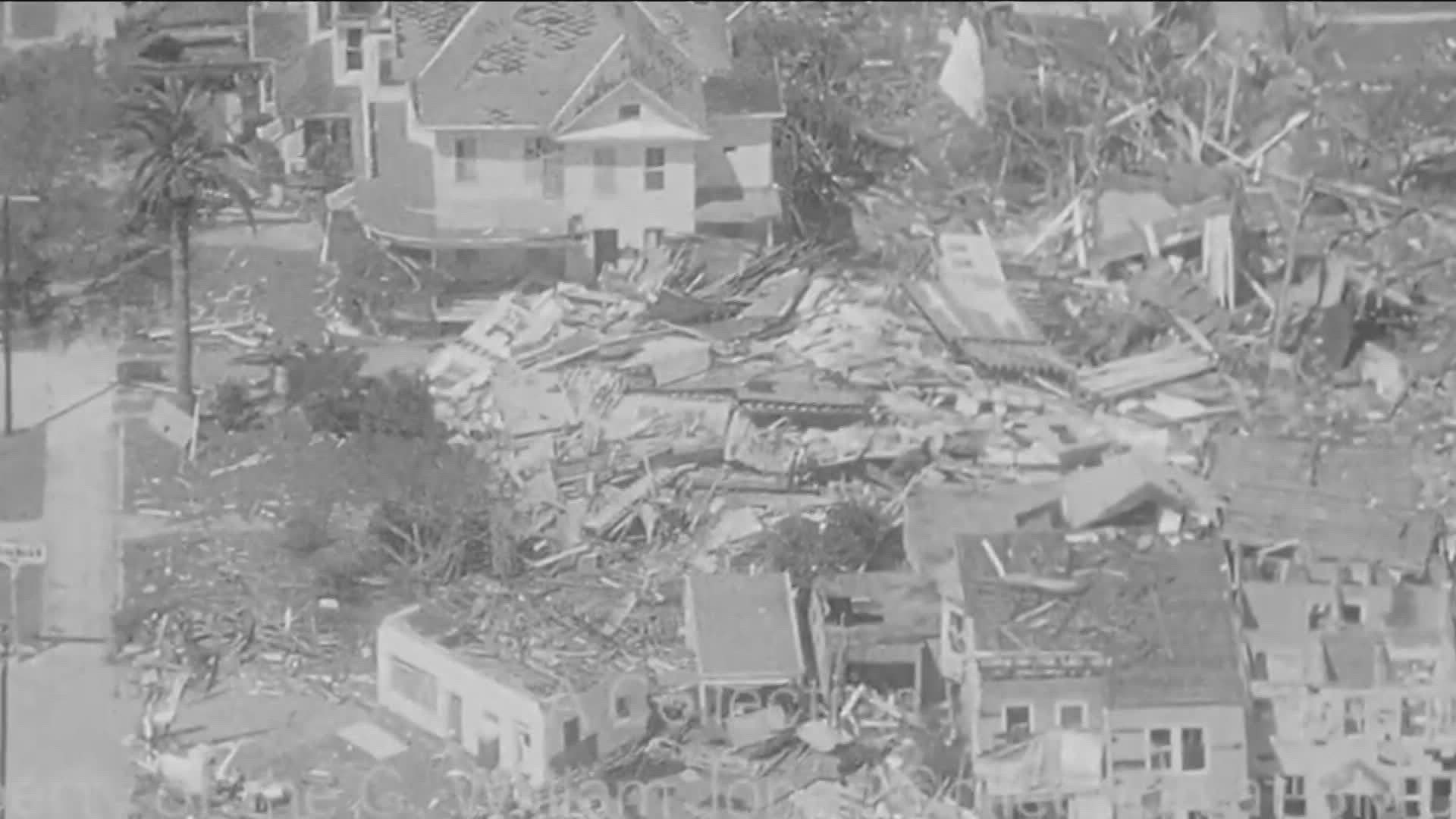TEXAS, USA — September is considered one the most active months for hurricanes to strike the Texas coast, and this week marked the anniversary of two of the worst: Hurricane Carla in 1961 and Hurricane Ike in 2008.
Carla turned out to be one of the biggest storms in size in hurricane history and caused damage from Port Arthur to Brownsville – the entire 600-mile length of the Texas Gulf Coast. Torrential rains and high winds were felt in Austin and beyond.
When it came ashore, Carla had winds of 170 mph. But it was the storm surge and high waves that caused much of the damage, flooding homes and businesses from Port Arthur all the way to Corpus Christi.
After the storm passed, the Weather Service reported that most of the injuries from the hurricane were caused by snake bites from the thousand carried in by the flood waters. Thousands of water moccasins were washed from southeast Texas swamps and bayous and ended up piling up on streets and in yards.
Live television coverage about the approaching storm is credited with the surprisingly low death toll. Thirty-eight people died.
Advance warnings led to the evacuation of nearly 400,000 coastal residents before the hurricane hit.
A young reporter named Dan Rather from Houston TV station KHOU Channel 11 brought live reports and radar updates continuously from the Galveston Weather Service office, something not seen before on TV. Impressed by his reporting, the CBS network offered him a job, and the rest, as they say, is history.
Hurricane Carla: The storm that brought massive destruction along the coast, and brought television into the age of live reporting from a hurricane.
Fourteen years ago this week, Hurricane Ike took a similar path to the Texas coast taken by Carla.
Ike slammed into Galveston County on Sept. 13, 2008, and became one of costliest storms in U.S. history with losses totaling $29 billion.
Winds reached 110 mph, but it was water that did most of the damage. The hurricane pushed a 22-foot storm surge into a region dotted with beach communities that were literally wiped off the map by the churning tide.
More than 140,000 coastal residents in Ike’s path didn’t evacuate despite authorities warning them that they faced “certain death” if they remained in their homes. Many said they chose not to leave the coast for higher ground because of the traffic jams they encountered in 2005 when Hurricane Rita was approaching the same area.
Thirty-seven people lost their lives in Hurricane Ike and hundreds more remained unaccounted for.
PEOPLE ARE ALSO READING:

